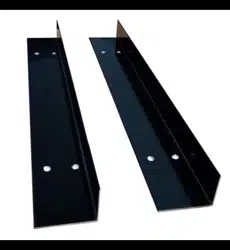Loading ...
Loading ...
Loading ...

5
Installation Options
Before proceeding, you need to establish the gas type which your barbecue will run on, and the style
of installation you need.
Natural Gas or LPG/Propane
Before beginning installation or assembly, check that the gas type which the
barbecue is designed for is correct for the gas available to you. In most countries
the choices are natural gas or LPG/propane. You will find the gas type label on
the side of your barbecue. If your barbecue uses the incorrect gas type, or if you
are unsure, consult your dealer before going any further. Using the wrong type of
gas for a barbecue is extremely dangerous.
Natural Gas Conversion: Most newly purchased barbecues are made for LPG/
propane. A natural gas conversion kit is available to allow your barbecue to run on
natural gas.
NATURAL
GAS
REFER TO LOCAL
GAS AUTHORITY FOR CONFIRMATION OF GAS
TYPE IF IN DOUBT
LPG
PROPANE
GAS
REFER TO LOCAL
GAS AUTHORITY FOR CONFIRMATION OF GAS
TYPE IF IN DOUBT
Fixed (Piped) Installations
Piped Natural Gas: Although installation costs are higher, this is typically the least expensive way to run
your barbecue. Natural gas is delivered via pipeline to a gas meter near the
perimeter of your home. From the gas meter, gas is taken by a further series
of pipes to each appliance that uses natural gas.
Piped LPG/Propane: Some properties do not have natural gas available to
them. In these cases, the local gas supply company may be able to provide
two 45 Kg (100 lb) cylinders permanently installed on the outside of your
home. These are refilled for you by the gas company based on your usage
patterns. Copper pipe is then run from these cylinders to each appliance that
uses LPG/propane.
There are two methods of connecting the gas to your barbecue, both of which
require the services of a licensed gas fitter:
For built in (ie non-mobile) installations, the barbecue inlet can be connected directly to copper piping.
From here the barbecue cannot be moved.
The copper piping can terminate in a “bayonet point” on a wall or other structure. A special hose and
terminator allows the barbecue to be connected and disconnected from the bayonet point safely and
conveniently. This allows the barbecue to be moved if necessary.
•
•
Portable LPG/Propane Cylinder
The most flexible arrangement is a portable LPG/propane gas cylinder attached
by a special hose and regulator to your barbecue. Although the cylinder needs
to be refilled or exchanged when empty, this installation has the advantage of
being more mobile, and not requiring the services of a licensed gas fitter.
Built in or Mobile Trolley/Cart
Whatever gas option you choose, your barbecue
can be mounted on a mobile trolley/cart, or it
can be permanently built-in. Details of built-in
requirements are on the next two pages. Details
for the assembly of your mobile trolley or cart is
included with its separate packaging.
bbq.indd 5 3/02/2006 15:18:12
Loading ...
Loading ...
Loading ...
